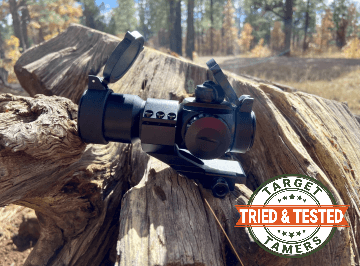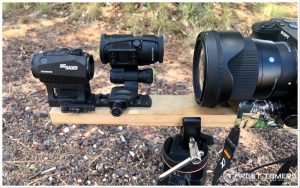Ozark Armament is based in Oregon, USA and has been around since 2016. They’re in the firearms accessories market, so they do more than just optics.
What I gravitated towards is their popular Rhino dual illumination red dot sight that has a very attractive price point. Can it really be all that good for its super low cost?
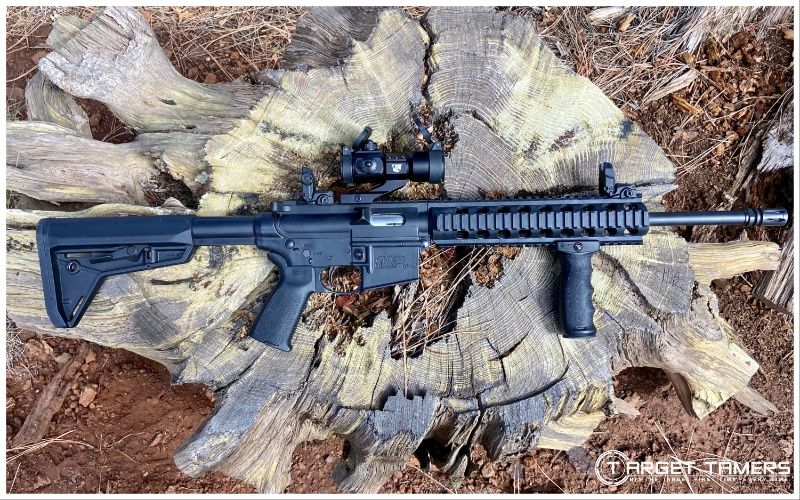
I thoroughly field-tested the Rhino to see if it’s worth the money or if it’s another dud that you should take a hard pass on.
I checked out the 4 MOA dot, dual illumination, 0.5 MOA adjustments, build integrity, zero retention, and more to acquire conclusive evidence that the Rhino should be taken seriously.
Quick Overview...
What I Like: 4 MOA dot
What I Don’t Like: Tethered adjustment caps
Best Uses: Recreational Use, Range Use, Training, Varmint Hunting, CQB, Close-Range, Best for .22 Rifles, Best for AR-15
- Magnification: 1x
- Objective Lens: 28 mm
- Reticle: 4 MOA dot
- Adjustments: ½ MOA
- Battery Life: 3000 hours
- Dimensions: 9.6 oz weight
- Mount: Single ring cantilever mount
My Verdict: In total, the Rhino red dot sight with dual illumination by Ozark Armament is a surprisingly good optic. The Rhino is a quality sight comparable to those more than four times its street price. Positive and accurate adjustments, a solid mount, and good illumination are hallmark features of the Rhino.
Why Trust Me?
After hundreds of hours of hand-testing Red Dot Sight in the field and on the hunt, and thousands more hours researching, writing, photographing and creating videos about them, I feel I have earned the title of expert when it comes to optics!
Optics are not just my passion, but also my full-time job!
I get my hands on as many of the optics I test as possible (through buying, borrowing or begging!) and run them through their paces to make sure they will perform out in field.
Check out our optics testing process here.
Over a decade of experience varmint hunting and plinking has been integral in putting together this Ozark Armament Rhino review.
Who is the Ozark Armament Rhino Red/Green RDS Best Suited to?
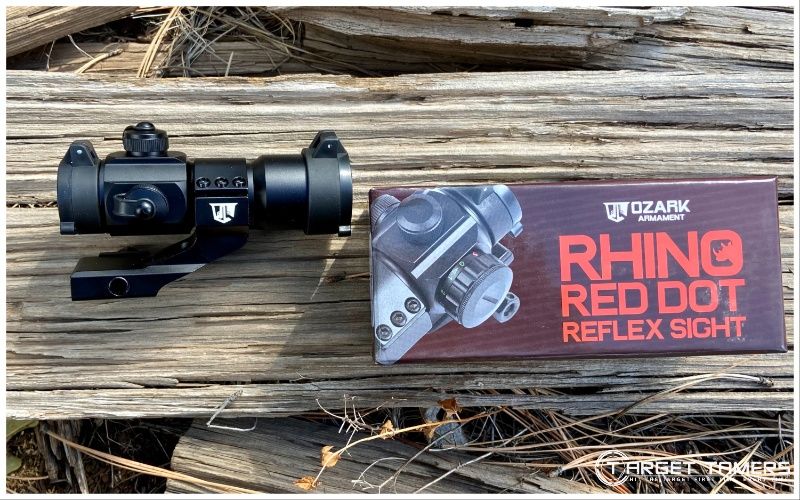
Overall, the Ozark Armament Rhino red dot sight offers excellent quality for its low price point. With dual illumination, good optics, accurate tracking, and a compact, lightweight size, it’s perfect for rimfire rifles and air rifles, and it’s just as great on an AR-15.
I recommend the Rhino mostly for outdoor use. This would be a great, low-cost sight for range use, training, and even some varmint hunting for distances inside 100 yards, although I have taken it out to 200 yards for fun.
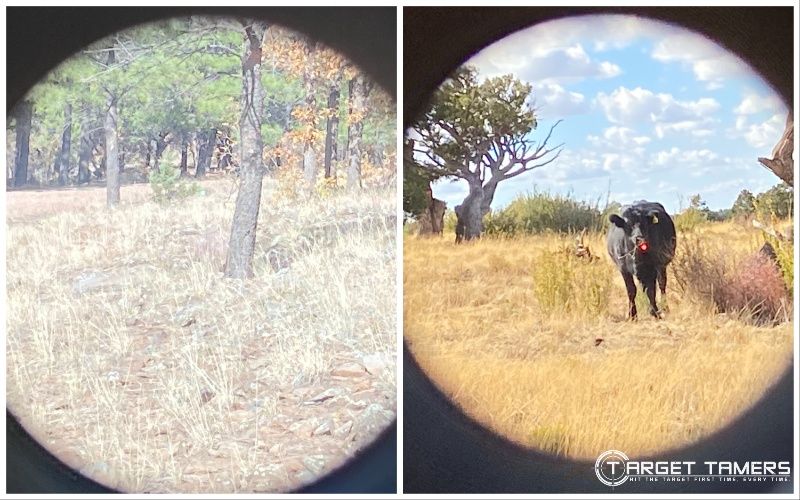
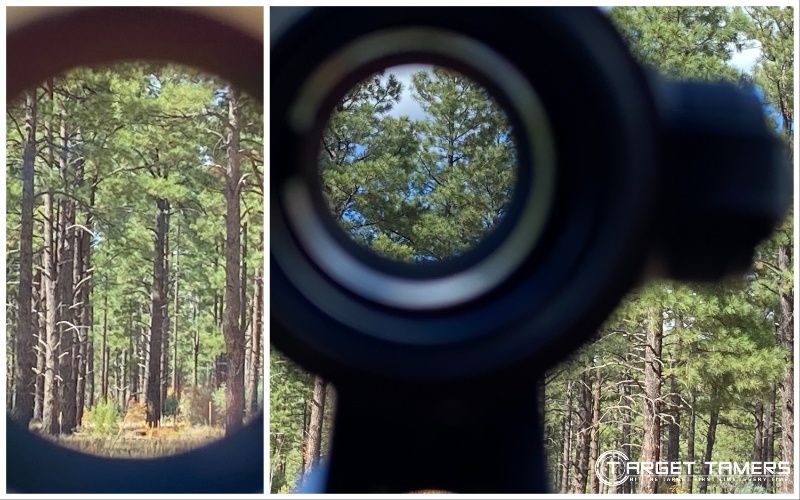
Glare and reflections have been a non-issue for me out in the field but are more apparent indoors. The illumination is suitable for indoor use. I found that the red illumination is best for extreme settings like in the dark or blacked-out buildings. Red has less star bursting at the dimmest setting than the green.
For the money, the Rhino is one of the best budget red dot sights for anyone who wants a quality optic at the cheapest price point possible. It’s not a duty-grade or hunting red dot, but it certainly appeals to the cost-effective crowd for its sleek look and above average performance given its inexpensive cost.
How Does the Ozark Armament Rhino Red/Green RDS Perform?
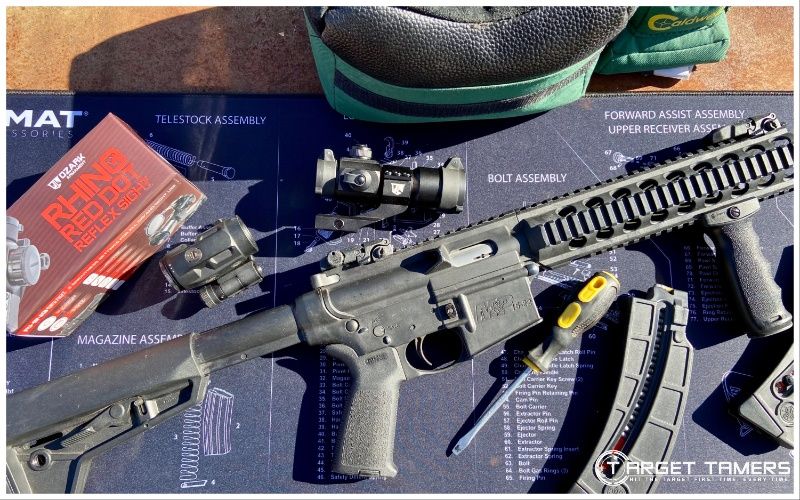
I’m surprised. That’s how I would describe my experience with the Ozark Rhino red dot sight. For the money, I don’t think anyone expects much. Usually, you’d want to spend a little bit more to get better quality and performance, but the Rhino may just be the exception to this rule.
To sum up overall performance in a paragraph or a few, it’s easy to use with two eyes open. The illumination is adequately bright for most applications. I have no issue acquiring the 4 MOA dot in either red or green illumination.
Throughout all my range testing, the Rhino tracked accurately and held zero. As long as I was consistent about repeatable mounting, I was very happy with the Rhino’s performance out to 100 yards and the groups I could get.
I really put the Rhino under some heavy stress to test zero retention. Though it holds zero under normal use, it will be off after excessive abuse, but I’m still pleased with the results.
In a vain kind of way, the minimalistic design of the Ozark sight is appealing to me. It’s a full-size enclosed red dot sight, and it looks awesome on the rail. Pair it with a magnifier or BUIS, and it’s a good-looking setup on an AR-15 rig. Other than the single white logo on the mounting ring, it’s free of any obnoxious designs. I’m giving two thumbs up to Ozark for their “less is more” approach to the aesthetics.
The Rhino is lightweight, compact, and the mount is surprisingly solid. As as a red dot, the Rhino performed better than I honestly expected given the way low price point.
Features & Benefits
4 MOA Dot
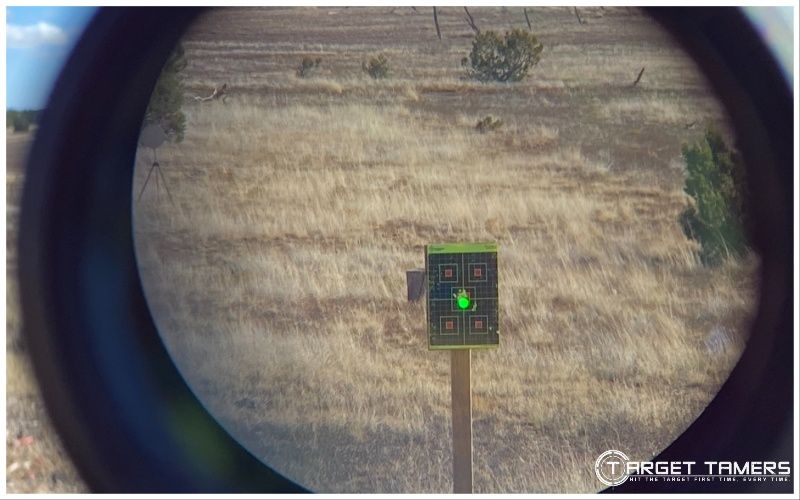
A 4 MOA dot has subtension of 4 inches at 100 yards. That’s pretty big, but it’s excellent for close range use and fast dot acquisition. In all my range testing, I never had an issue acquiring the dot, getting it on the target, or ever losing it.
I would say that the Rhino is ideal for a 25 or 50 yard zero and taking it out to 100 yards is within its capabilities. I did this exact scenario with the Rhino and hit steel (15x15” plate) at 100. Fast and easy is how I would describe my experience.
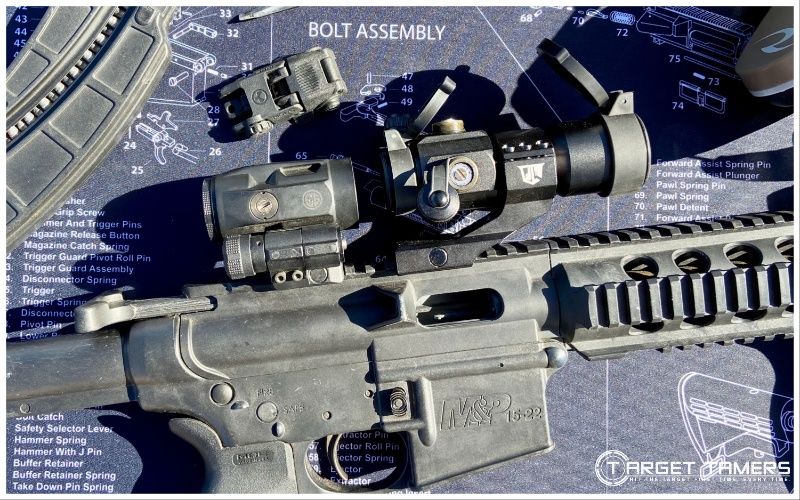
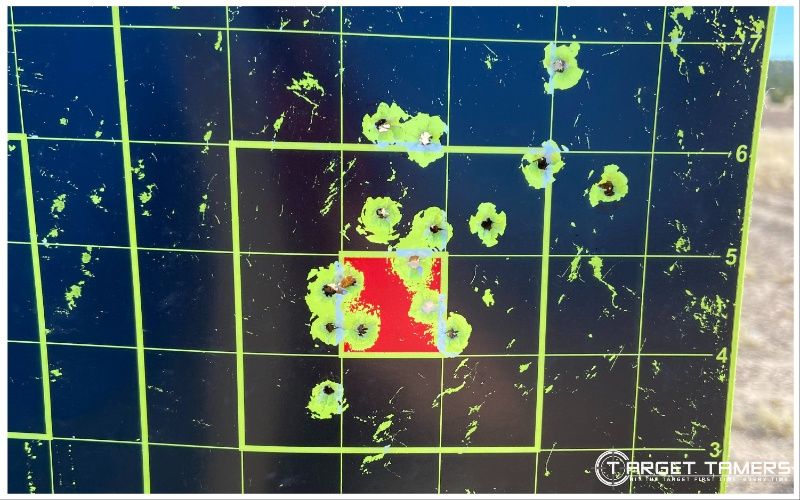
I also added a Sig Sauer 3x magnifier to the mix. At 100 yards, I heard my pings on my steel plate and was happy with that.
If precision and power at and past 100 yards is what you’re after, you may as well opt for an LPVO. As a red dot with a 4 MOA dot, it performs exactly as expected and is well suited to close-range engagements.
Astigmatism
I didn’t have to wear my glasses with the Ozark Rhino red dot sight for my far sightedness. My buddy who has uncorrected astigmatism shot fine with it even though he was seeing stars. Another friend who has astigmatism sees squiggles, but with his glasses on, he sees a dot!
I recommend the Ozark Armament Rhino for close-range use (inside 100 yards), mostly for outdoor shooting, and if you have astigmatism, keep your glasses or contacts on for a round dot.
Dual Illumination
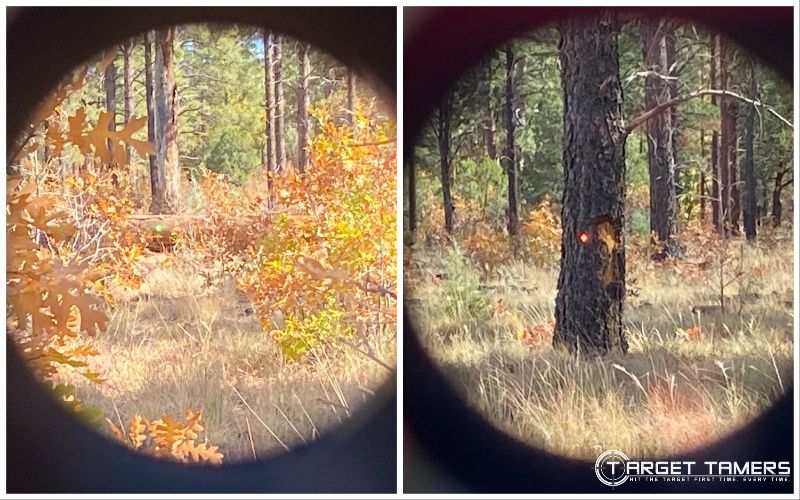
The Rhino has dual illumination with red and green LEDs. I’ve spent range days with each color, and though I really like the green, I had better groups with the red. There is a slight change in POI, maybe about an inch right for me, when switching between colors.
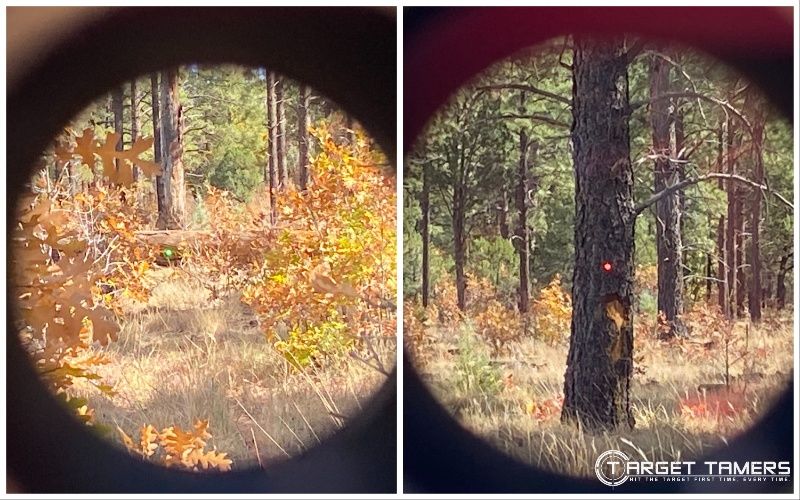
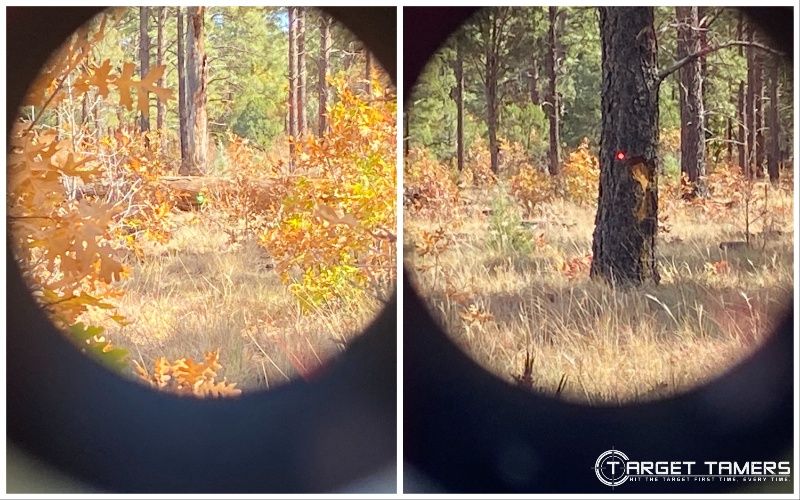
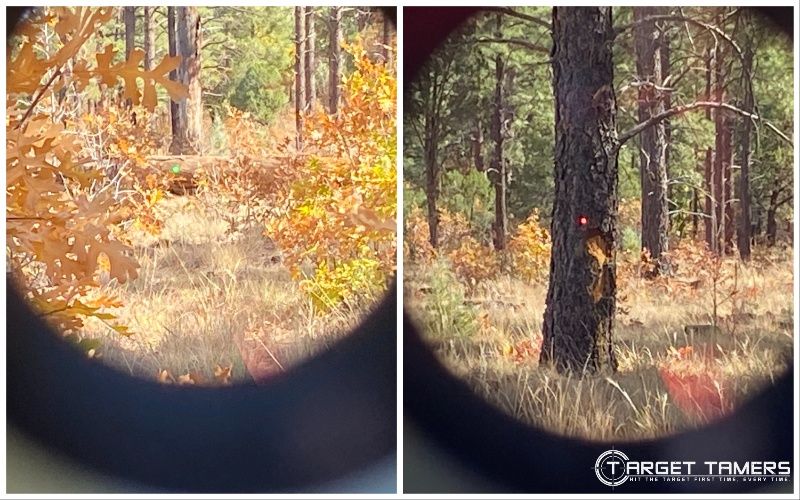
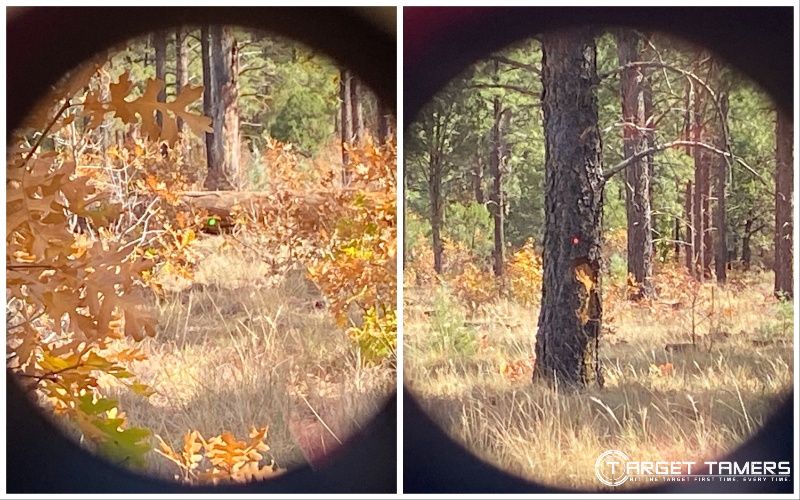
I like that each color has five brightness settings although there’s not much of a variation between them. Dim brightness is doable if you must use it in dark conditions or buildings, but the dot will starburst and flare more-so with the green than the red. I would say that the illumination is best suited to outdoor conditions, although it does better in the dark than the illumination on the Ozark Rhino 4x R4X-RGB sight.
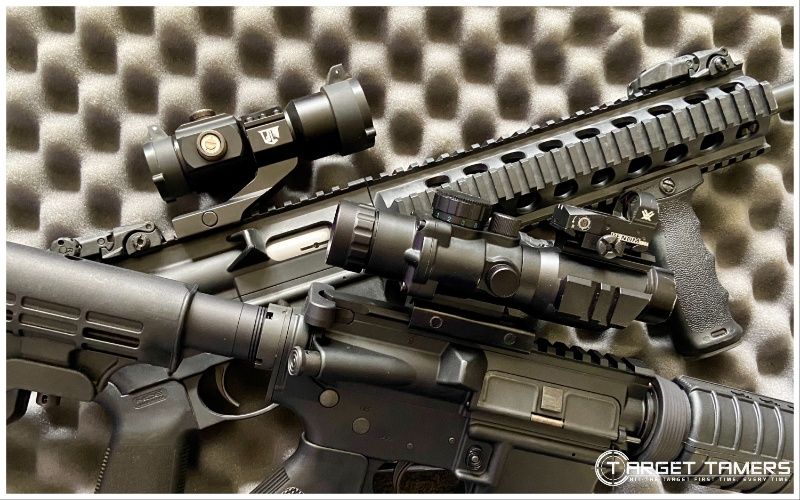
However, I did compare its dimmest brightness to the Vortex Venom’s dimmest setting, and the Ozark Rhino is definitely dimmer and flares less indoors than the Venom.
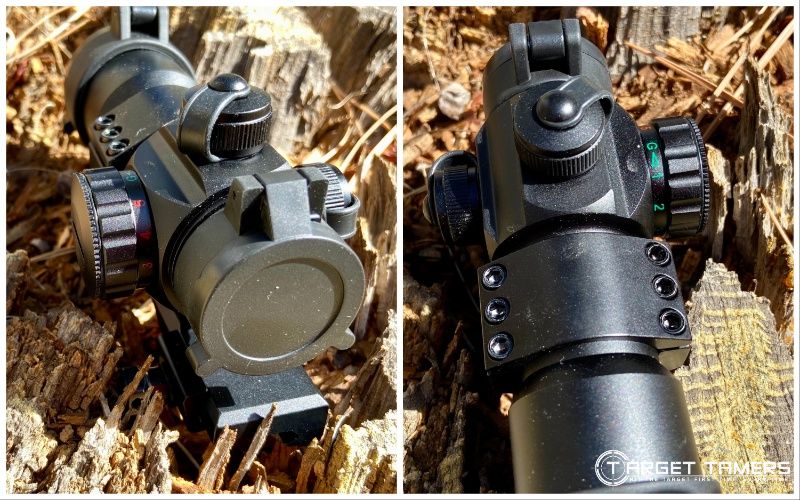
The illumination dial is nice and is what I prefer over button control. The knob has good resistance that you can rig an intermittent off position between the settings if you really wanted to, but the G and R buttons are the manual off positions.
What I don’t like is that the indicator for the setting you’re on is on the top surface of the sight. If I want to know what setting I’m using, I have to move the rifle upwards or move out of position to see it. I think this function would be better served on the rear side (facing your eyes) so that you don’t need to move your head and lose your position.
Build Quality
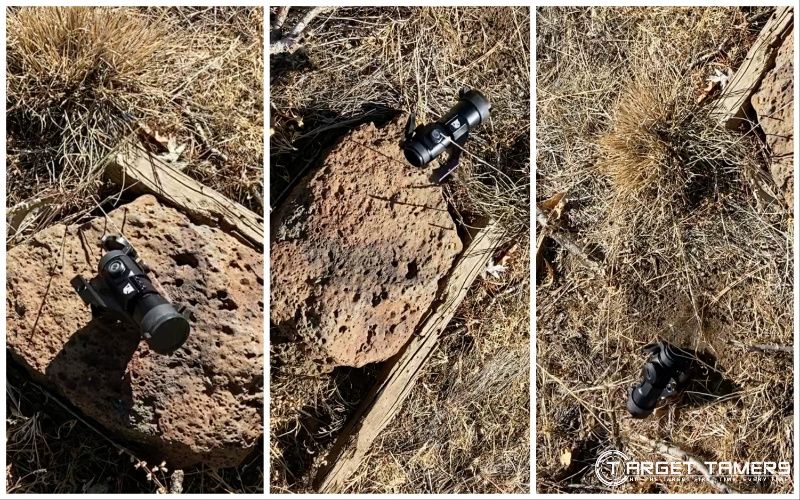
The Rhino red dot sight is built like a tank. I threw it (and it hit and rolled nine times that I could count!) and drop-tested it from about a four foot height directly onto a rock… twice. Other than getting dusty and a couple of hard-to-see superficial scratches on the ocular bell and a few nicks on the edges of the cap that are not even worth documenting, the mount and body have held up superbly.
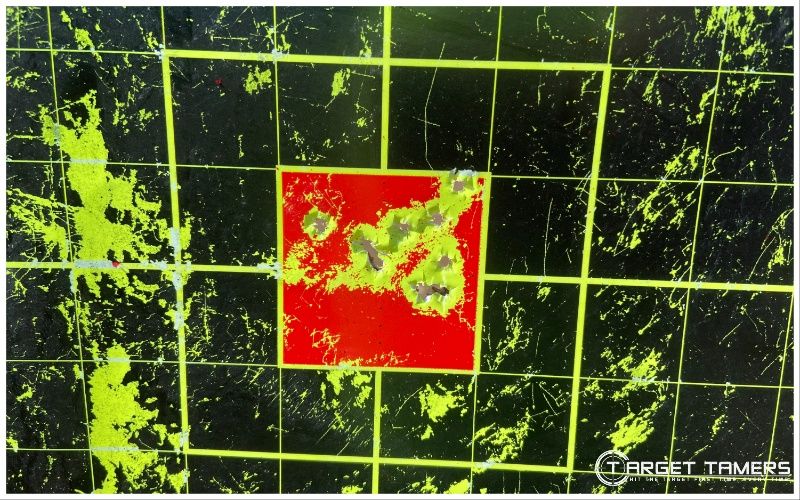
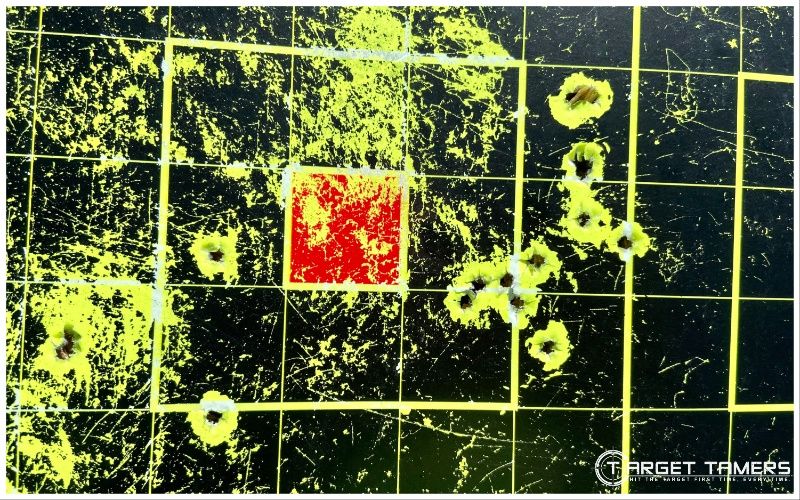
I threw it back on the rail, same rail spot, and as I expected, it didn’t hold zero. I had a group that went left but I was mostly 1-2” to the right – elevation still on. Not bad aye? With follow-up adjustments, the sight was re-zeroed.
It’s exactly 5” long, weighs 9.6 oz, and I love the flip-up caps! They fit perfectly and you get a nice, positive snap when they’re flipped down.
I really liked the tethered turret caps. I’m always moaning about losing adjustment caps. Even though these were tethered, I still lost them. I looked back on some footage and realized they flew off when I threw the Rhino into the dirt. My bad.
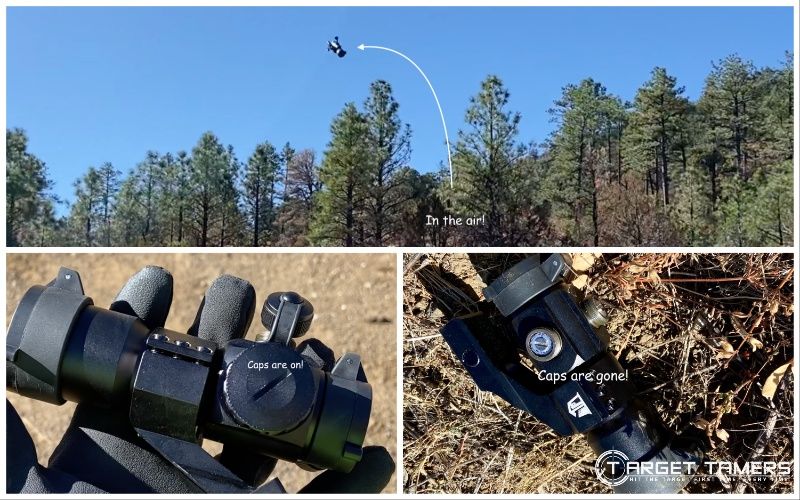
I didn’t like that you can’t use the caps as a tool to make adjustments (even though I lost them) and no tool is included for this purpose. About 99% of the time, this isn’t an issue for me as I usually have tools with me (flathead screwdriver) or another red dot’s tool will do the job.
Unfortunately, my last range day with the sight was a minimalist day to triple check zero retention, etc. I didn’t have any tools with me. I had a brass casing from a spent round, and I personally hate doing that. So, out came a penny to do the job.
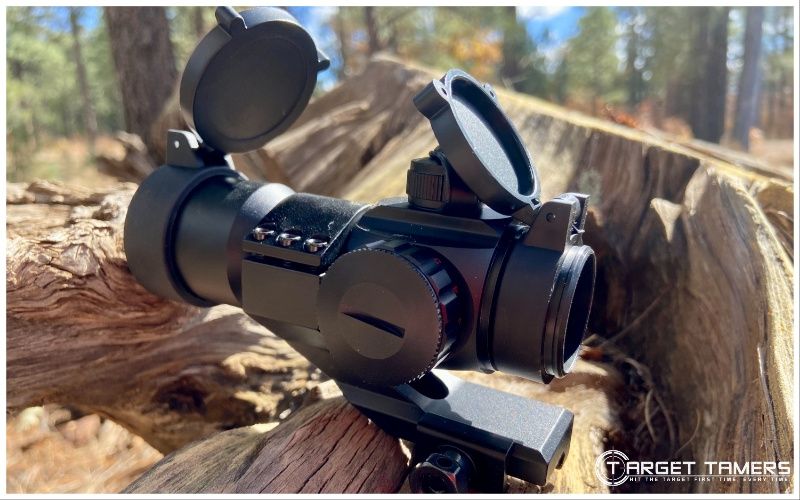
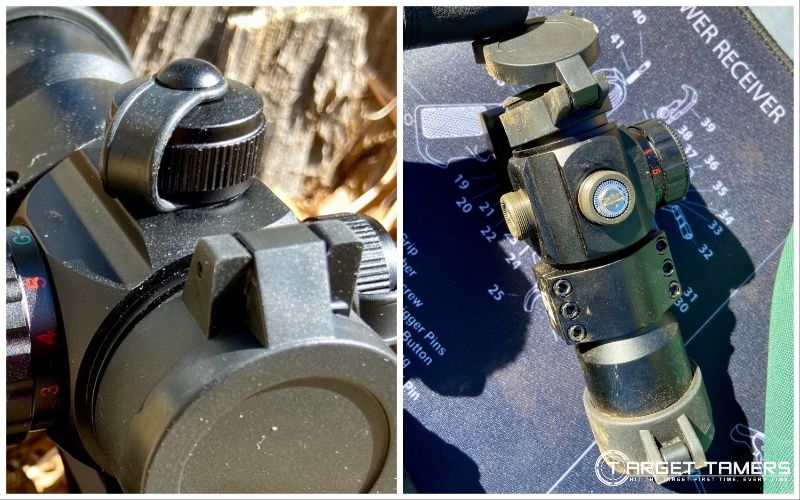
I don’t see any seals around the adjustments now that the caps are gone, so I’m not too confident in its water tightness. Though it looks to be a one-piece tube red dot, I suspect that the exposed turrets are going to be the weak link to moisture. It’s rated as a IP65 optic, so it has a good dust rating but it's only water resistant.
Even so, Ozark Armament backs the Rhino red dot with a lifetime guarantee. So, they’re made to be used and abused, and if anything happens, it appears they’ll cover it.
Tracking & Adjustment Accuracy
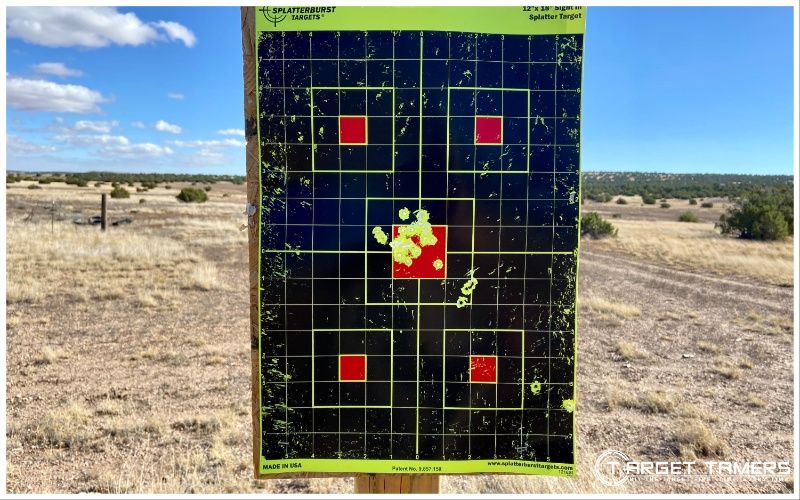
Being completely honest, for its low cost, I wasn’t expecting much. I’ve spent twice the money on micro enclosed red dot sights, and I still get mushy turrets and I may end up chasing groups. This is far from the case with the Ozark Rhino.
The adjustments are positive and crisp. I can hear them with ears on. They feel good and most importantly, they track accurately. Adjustments are in 0.5 MOA, so ½” at 100 yards per click. Out of the box I was on paper, made some conservative adjustments, and I was easily zeroed on my third group.
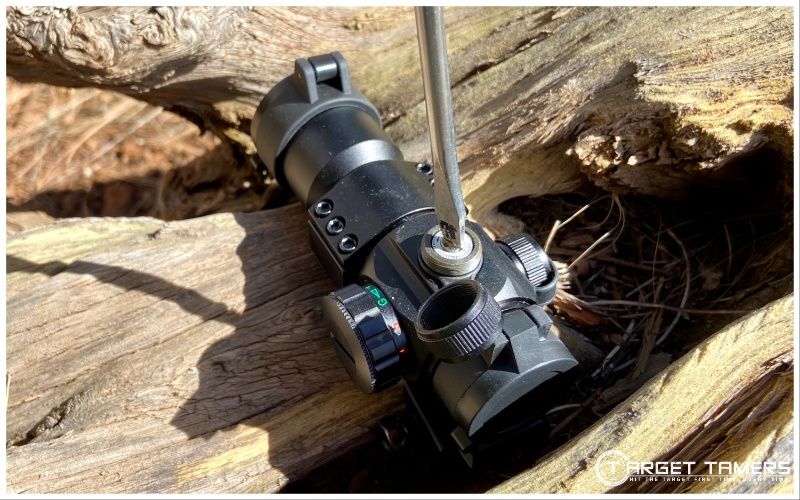
For the money, I was pretty impressed that the Rhino was off a bit on windage after having been abused the way it had been. I could still make accurate follow-up adjustments to re-zero.
From my hands-on testing, I think it’s best for some light training, range use, and small game hunting inside 100 yards. I would say it's suitable on a truck gun but if you slip and fall in the woods or in wet conditions while in the hunt and your rifle goes down with you, I’d be worried about zero retention then.
Cantilever Mount
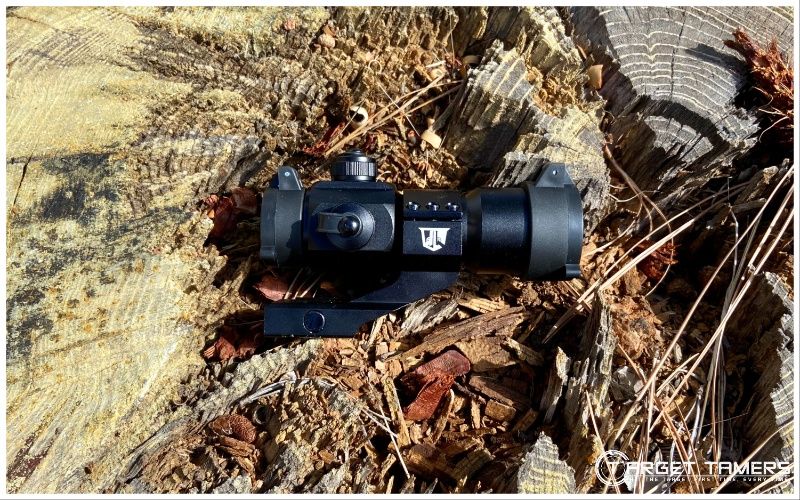
Unlike some complaints of a loose mount and movement on the rail that I’ve read about, I haven’t had that issue. I specifically looked for it, but the cantilever mount that came pre-installed on the Rhino is solid.
Though it’s not a lever clamp quick release mount, it doesn’t require tools to get it on the rail. It’s a finger-tight mount and you could give it another half twist with a small Phillips or something like it.
I have found that the mount is finicky just like other red dot sight mounts. If you take it off the rail and expect it to hold zero, you need to put it back in the same rail spot, push forward and tighten it to the same tension you did before.
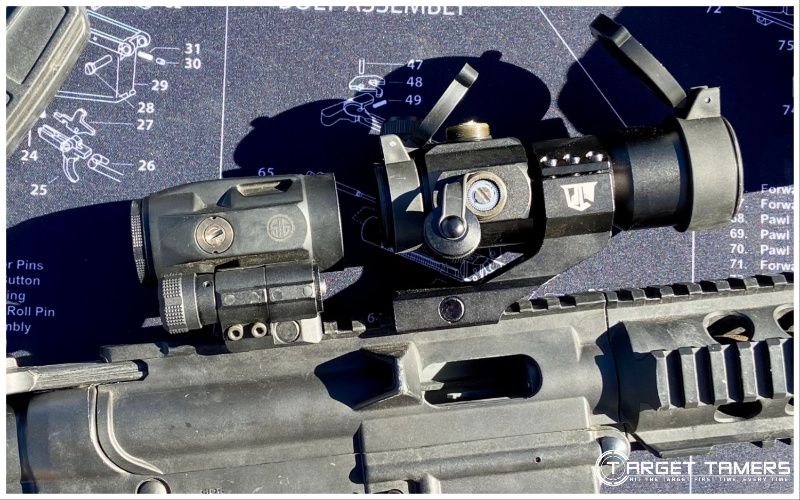
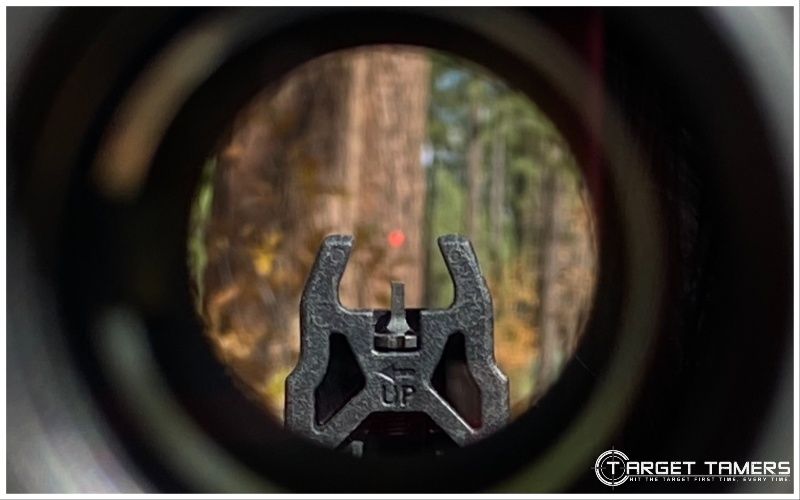
It has a 1.41” optical axis height for an absolute co-witness with back-up iron sights if you use them. I couldn’t get the camera focus right with the rear sight in the photo, but you get the idea of what I’m trying to do here.
It doesn’t come with a spacer to raise it for a lower 1/3 co-witness, but if your lower 1/3 magnifier can be adjusted (by removing a spacer) to come down to an absolute co-witness, you’ll be right on.
Ozark Rhino VS Vortex Strikefire II
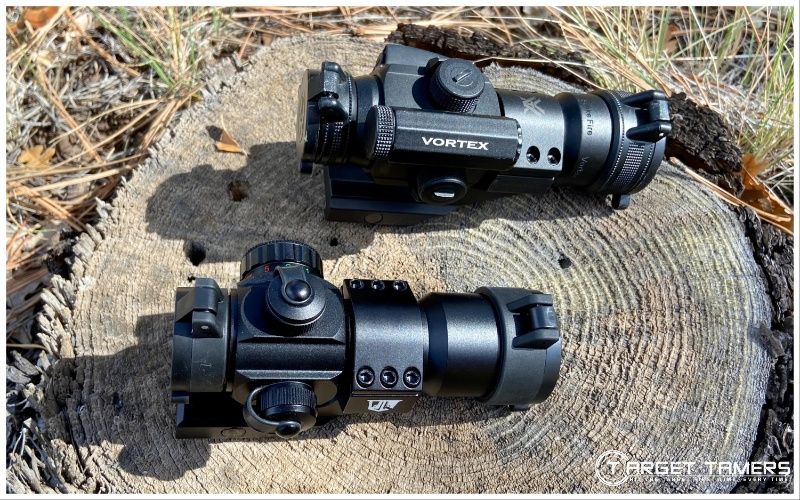
The Ozark Armament Rhino red dot sight is often compared to the Vortex Strikefire II red dot sight. Though very similar in the fact that they’re both 4 MOA reflex red dot sights with dual illumination, there are some significant differences between them.
The Vortex Strikefire II is still one of my favorite sights today. It routinely sits atop my beloved M&P 15/22. First off, the Strikefire is bulkier and heavier than the Rhino. It weighs 12.5 oz versus the 9.6 oz of the Rhino.
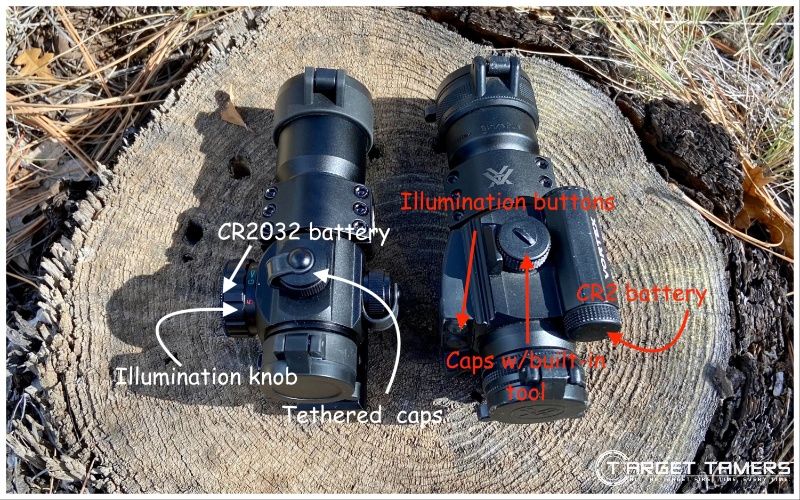
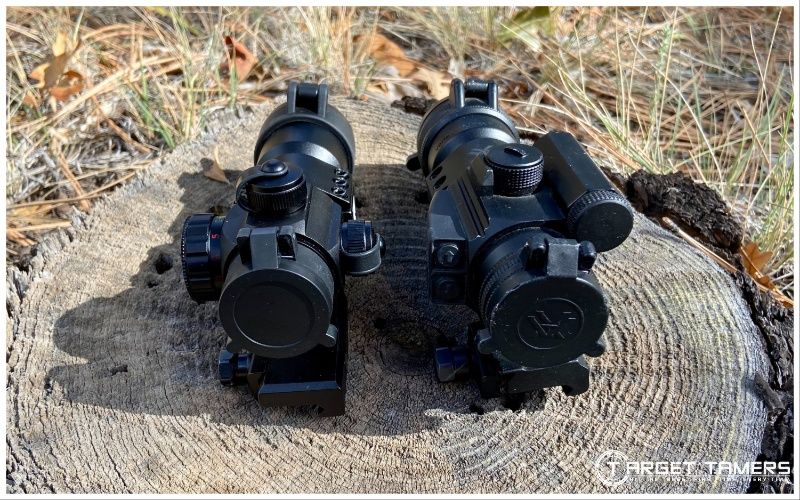
The Strikefire also requires a CR2 battery, and those are a pain to buy – these aren’t batteries that you’ll find in a rush at the nearest dollar store. The dual illumination model will run about 300-5000 hours. The Rhino is rated to run about 3000 hours. As continuous-on red dots, it’s not the greatest battery runtime rating for either sight, so I’m going to call it a wash between the two. I do like that the Rhino takes a CR2032 battery - now those you can find at the local dollar store.
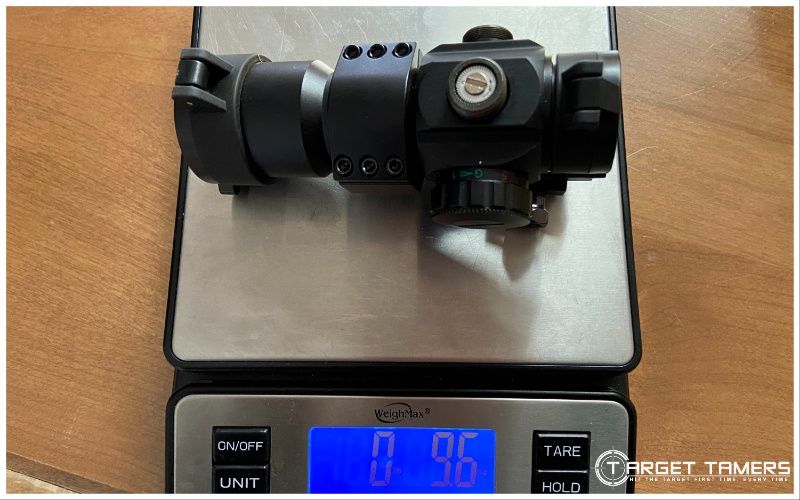
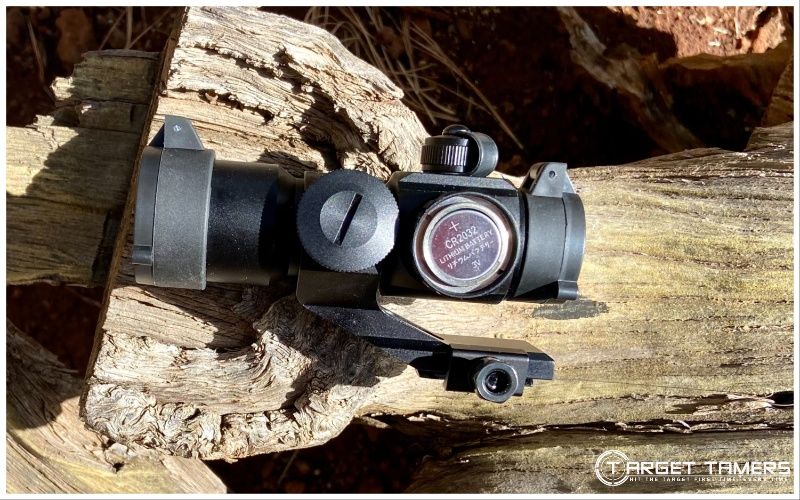
The illumination controls are also different. The Strikefire II has button control which is decent, it works, and it’s responsive. You do have to hit the very center of the buttons and mostly use a thumbnail to get the job done. I prefer the illumination knob on the Rhino. It has good resistance, two “off” positions, but I would like to see the setting I’m on without having to move my head to the top of the sight.
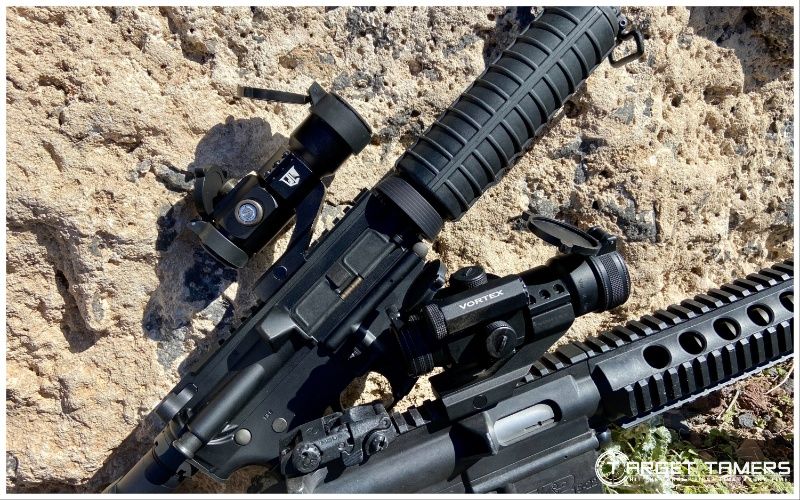
Both sights are great options for the same applications like target shooting, varmint hunting, and for close-range engagements. However, the Vortex is better built with O-ring seals around the base the of the turrets, I get a better, tighter fit with the rings around the tube, and I’ve not had an issue with zero retention to date. Plus, the caps have built-in protrusions to make adjustments!
It would be remiss of me not to mention that I like the Rhino better for the money. It’s significantly cheaper, it’s actually very good quality for its low price point, and it’s more compact than the Vortex sight. I prefer the illumination knob and the CR2032 battery as well. If you like what the Strikefire II has to offer but can’t justify spending that much, the Rhino is a decent compromise.
Limitations of the Ozark Armament Rhino Red Dot Sight
Tethered Adjustment Caps
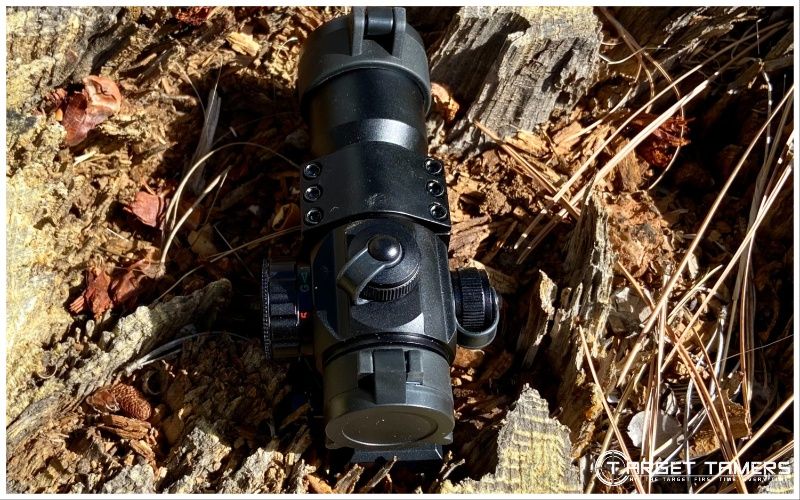
After all this time spent with the Ozark Armament Rhino red dot sight, the only thing I’m looking back on with regret is that I lost the adjustment caps. I really liked that they were tethered, but I managed to lose them anyway.
I could say that this is self-inflicted regret, but I am wondering if they could have just as easily come off during a hunt or rolling out and up on range days, etc. I guess I’ll never know now. I’m also wary of the Rhino getting wet without the caps secured on.
Lesson learned. For your peace of mind, keep track of your caps.
Popular Questions About the Ozark Rhino Red Dot Sight
The Ozark Armament Rhino red dot sight comes with a pre-installed cantilever mount. From field-testing, it proves to be a solid mount. However, if a replacement or upgrade is required, it would need to be a single ring cantilever mount or ring with a 30 mm diameter.
There is only space for one ring mount, and the tube size is 30 mm.
Iron sights of any type are not included with the Ozark Rhino red dot sight. Accessories included with the Rhino are a CR2032 battery, lens cloth, tool for the mounting screws, tethered adjustment caps, and flip-up lens caps.
A small paper is included with simple instructions to install the battery, mount the sight, use the illumination, and make adjustments. A small warranty card is included as a reminder to register your Rhino with Ozark within 15 days.
The reticle is not glass etched. The Rhino requires a battery to power the illumination. The Rhino is a reflex red dot sight where the reticle is provided via a stenciled shape (a 4 MOA dot), and an LED emitter shines through it to project a reticle onto the glass and is reflected back to the eyes.
Apparently, the Rhino has been tested with 12-gauge magnum turkey loads and holds zero. It appears that many have mounted the Rhino .308 rifles, AK 47s, and more and claim it holds zero.
Personally, I used the Rhino on an M&P 15/22 and Bushmaster Patrolman M4 in 5.56 and have had no problems. Though only minimal recoil rifles, its build integrity from its adjustments to its mount and lens assemblies suggest it can handle heavier loads.
The Rhino red dot sight is covered under the hassle-free lifetime guarantee. This looks to be Ozark’s No B.S. lifetime warranty. It covers defects in the sight and normal wear and tear. That last part is worthy of note as I know of one other manufacturer that specifically states warranty coverage on normal wear and tear.
As far as intentional damage to the scope – well, that’s not covered. Be smart.
Ozark Rhino: The Best Cheap Red Dot Sight
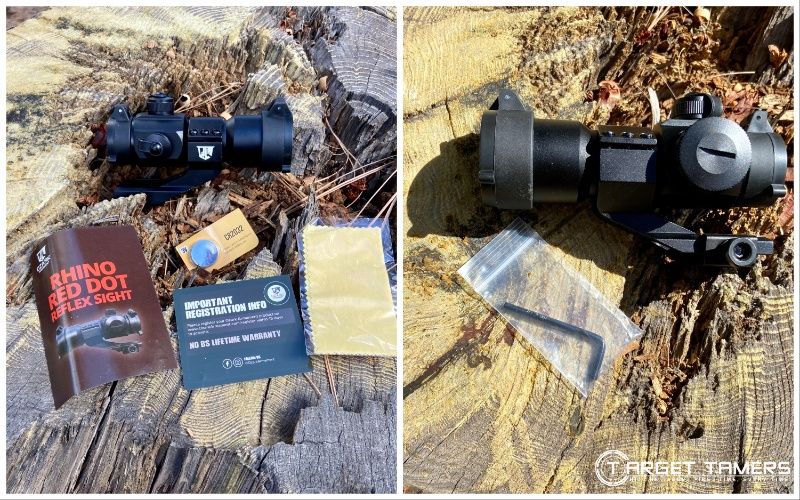
Overall, the Ozark Armament Rhino red/green red dot sight is a quality optic for the money. It’s truly affordable and offers a lot of value considering its tried and tested performance. The illumination is good, the adjustments are spot on, and it holds zero – under normal circumstances.
I wouldn’t recommend doing what I did to test its zero retention as it could have gone a lot worse. Considering it didn’t is a testament to its quality.
I’m really surprised that such a cost-effective red dot sight performed so well. With my biggest gripe being the fact that I lost the caps and can blame that on myself, that says something. I highly recommend the Rhino for a lot of average shooting applications especially if you’re on a budget.
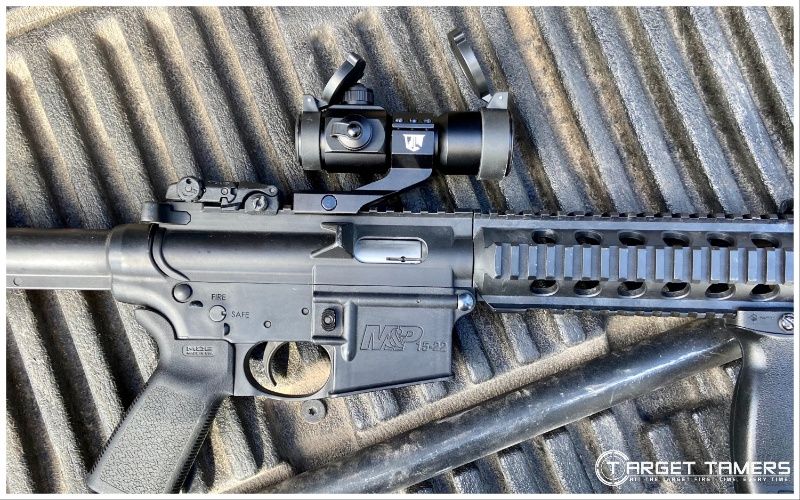
Thank you to Ozark Armament for sending me the Rhino red dot sight to field test. Please note, even though this product was provided by the manufacturer, all my opinions expressed are my own and not in any way influenced by the manufacturer.
Further Reading

